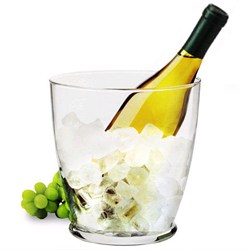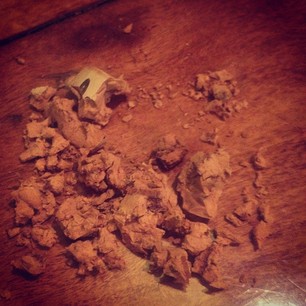I often get asked the question, “Do like like Shiraz,” or “Do you like Chardonnay,” or something similar. Recently, I was asked if I like Port. I do! But what is Port? True Port wine or Vinho do Porto comes from the Douro Valley in Portugal. There are over 100 grape varietals sanctioned for making Port wine. Additionally, many other countries make Port-styled wines. With so many differences in the grapes, the regions grown and styles of Port, it is almost impossible to define what Port wine is. It comes sweet, semi-sweet and dry. It comes as single vintages (Vintage Port) or Tawney Port which is often multiple vintages aged for several years in wood and blended to provide some interesting characteristics.
 The other evening my brother-in-law and his family were staying with us and we decided to drink some Port wine after dinner. I started with my regular drinking Port which is currently the 2004 Dow Vintage Port. I have one bottle of the 1977 Dow Vintage Port (for a special occasion and to drink with great pleasure over a short period of time in the not too distant future). I also have two bottles of the 2007 Dow Vintage Port which is one of the highest rated vintages ever, but those two bottles will be lying in the cellar for another 20 years or so before I touch them. The 2004 Dow Vintage Port is a very nice wine. This wine matured early and is easily drinkable now. It is fruity and has softened, especially when the bottle has been open for a while. This wine is very inexpensive ($12 – $15 per bottle in the US and about $25 – $30 per bottle in Australia) and provides for a great-valued drink. A truly wonderful drink for the money, but should be drunk over the next few years.
The other evening my brother-in-law and his family were staying with us and we decided to drink some Port wine after dinner. I started with my regular drinking Port which is currently the 2004 Dow Vintage Port. I have one bottle of the 1977 Dow Vintage Port (for a special occasion and to drink with great pleasure over a short period of time in the not too distant future). I also have two bottles of the 2007 Dow Vintage Port which is one of the highest rated vintages ever, but those two bottles will be lying in the cellar for another 20 years or so before I touch them. The 2004 Dow Vintage Port is a very nice wine. This wine matured early and is easily drinkable now. It is fruity and has softened, especially when the bottle has been open for a while. This wine is very inexpensive ($12 – $15 per bottle in the US and about $25 – $30 per bottle in Australia) and provides for a great-valued drink. A truly wonderful drink for the money, but should be drunk over the next few years.
 We then tried a bottle of Penfolds Grandfather Tawny Port. This is a non-vintaged Port blended across eight years with the vintages all being 20 years old or so. This wine was very, very smooth and had a completely different mouthfeel to the 2004 Dow Vintage Port. The Penfolds Granfather Tawny Port had a luscious, smooth feeling with caramelized, nutty sugars. The wine reminded me of the recent Christmas fruit cakes with brandy I had eaten – thick, juicy and sweet. A completely different style of Port from the 2004 Dow Vintage Port.
We then tried a bottle of Penfolds Grandfather Tawny Port. This is a non-vintaged Port blended across eight years with the vintages all being 20 years old or so. This wine was very, very smooth and had a completely different mouthfeel to the 2004 Dow Vintage Port. The Penfolds Granfather Tawny Port had a luscious, smooth feeling with caramelized, nutty sugars. The wine reminded me of the recent Christmas fruit cakes with brandy I had eaten – thick, juicy and sweet. A completely different style of Port from the 2004 Dow Vintage Port.
 We then opened a bottle of the 1967 Lindemans Vintage Port. This ismy last bottle and while not quite as good as the 1954 and the 1957 Lindemans Vintage Ports I have had, it is a magnificent wine. I had some problems getting the cork out being soggy after 35 years in the bottle! Even the Ah So corkscrew was not able to help and ultimately, I ended up with the cork in the bottle. Yet, I was able to pour us a glass and we had just experienced our third very different Port that evening! The 1967 Lindemans Vintage Port was very big with plummy fruit flavors, luscious to the feel on the tongue beautiful, but slightly medicinal smells.
We then opened a bottle of the 1967 Lindemans Vintage Port. This ismy last bottle and while not quite as good as the 1954 and the 1957 Lindemans Vintage Ports I have had, it is a magnificent wine. I had some problems getting the cork out being soggy after 35 years in the bottle! Even the Ah So corkscrew was not able to help and ultimately, I ended up with the cork in the bottle. Yet, I was able to pour us a glass and we had just experienced our third very different Port that evening! The 1967 Lindemans Vintage Port was very big with plummy fruit flavors, luscious to the feel on the tongue beautiful, but slightly medicinal smells.
Therefore, when asked if I like Port, the answer is a resounding YES! I like the wide variety of Ports available from Vintage to Tawny, young and old, but particularly very old (30 years or more). Ports take on so many different identities with various flavors and styles made from so many different varietals of grapes that it is impossible to classify Port as a single type of wine. There are many different Ports, but any good Port is a great companion when sitting down in the evening and reading a good book.
Steve Shipley, author Wine Sense, out early 2014. Published by InkIT Publishing
© 2013. Steve Shipley
SAZ in the Cellar on Facebook
Wine Pinterest Boards
Twitter: Steve Shipley @shipleyaust; InkIT Publishing @inkitpub












